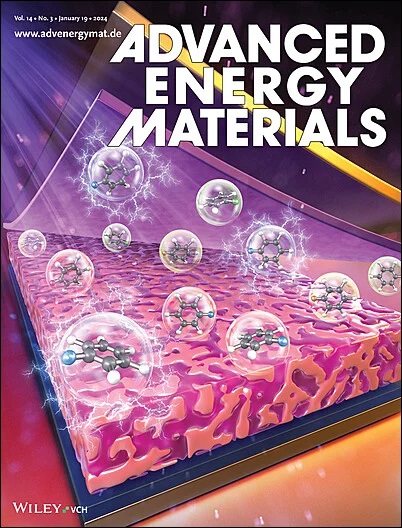Ultra‐Fast Charging High‐voltage Spinel LiNi0.5Mn1.5O4 Batteries Enabled by Mn─O Bond Regulating Strategy to Defeat Jahn─Teller Distortion
IF 26
1区 材料科学
Q1 CHEMISTRY, PHYSICAL
引用次数: 0
Abstract
The high‐voltage spinel LiNi利用Mn - O键调节策略实现超快充电高压尖晶石LiNi0.5Mn1.5O4电池克服Jahn─Teller畸变
高压尖晶石LiNi0.5Mn1.5O4 (LNMO)具有高能量和功率密度、优异的热稳定性、低成本和环境友好性等优点,是锂离子电池极具发展前景的正极材料。然而,Mn3+的存在会引起Jahn─Teller (J─T)畸变,导致Mn─O键延伸、晶格应力以及循环过程中结构和电化学稳定性的降低。为了解决这一问题,提出了一种键长工程策略,即在Mn - 16d位点共掺杂Fe,在空位的16c位点共掺杂Sb,以抑制J─T效应,稳定晶体结构。电子顺磁共振(EPR)、原位X射线衍射(XRD)和密度泛函理论(DFT)计算证实,Mn─O键调节策略有效地减轻了MnO6八面体畸变,减少了相变,增强了结构稳健性。此外,Sb的掺入扩大了晶格,促进了Li+的扩散。结果表明,优化后的FeSb‐LNMO具有卓越的电化学性能,在1C条件下循环200次后仍能保持98%的初始容量,在5C条件下循环1000次后仍能保持85.6%的容量。这项工作介绍了一种新的键长工程方法,通过多位点掺杂来克服高压LNMO的降解,实现超快速充电和长期循环稳定性。
本文章由计算机程序翻译,如有差异,请以英文原文为准。
求助全文
约1分钟内获得全文
求助全文
来源期刊

Advanced Energy Materials
CHEMISTRY, PHYSICAL-ENERGY & FUELS
CiteScore
41.90
自引率
4.00%
发文量
889
审稿时长
1.4 months
期刊介绍:
Established in 2011, Advanced Energy Materials is an international, interdisciplinary, English-language journal that focuses on materials used in energy harvesting, conversion, and storage. It is regarded as a top-quality journal alongside Advanced Materials, Advanced Functional Materials, and Small.
With a 2022 Impact Factor of 27.8, Advanced Energy Materials is considered a prime source for the best energy-related research. The journal covers a wide range of topics in energy-related research, including organic and inorganic photovoltaics, batteries and supercapacitors, fuel cells, hydrogen generation and storage, thermoelectrics, water splitting and photocatalysis, solar fuels and thermosolar power, magnetocalorics, and piezoelectronics.
The readership of Advanced Energy Materials includes materials scientists, chemists, physicists, and engineers in both academia and industry. The journal is indexed in various databases and collections, such as Advanced Technologies & Aerospace Database, FIZ Karlsruhe, INSPEC (IET), Science Citation Index Expanded, Technology Collection, and Web of Science, among others.
 求助内容:
求助内容: 应助结果提醒方式:
应助结果提醒方式:


